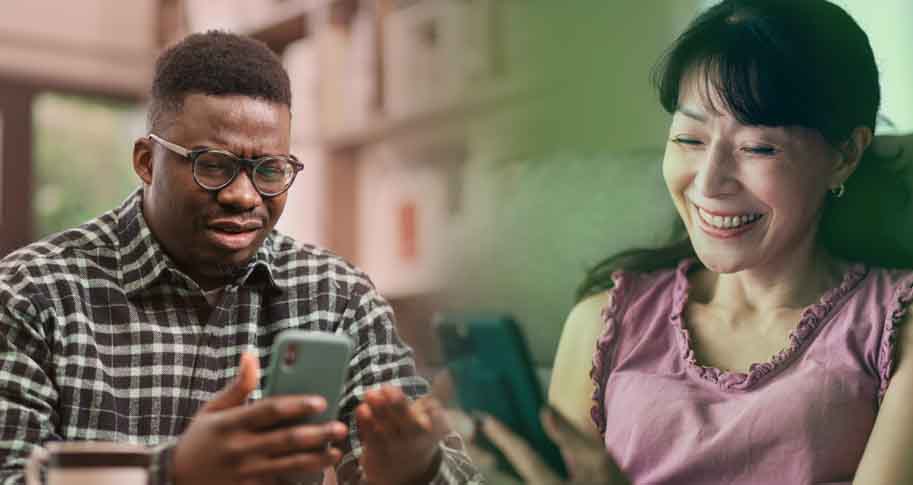
Telehealth found widespread adoption during the COVID-19 pandemic. It allowed patients to see their doctors and minimize unnecessary risk to others. And telehealth has other benefits as well. For example, it can help reduce the greenhouse gas emissions of the health industry. And it could improve access to health care in rural and underserved communities.
But in the post-pandemic world, that doesn’t necessarily translate to continued use. Some telehealth companies are struggling to break even after huge growth and are now having to cut back. And the U.S. Department of Health and Human Services found that between April and August of 2022, only 22% of households used some form of telehealth services in the last four weeks.
And this makes some sense. We’re creatures of habits, and if we’re used to seeing our physicians in person, we’re going to continue to expect that kind of experience. In this regard, COVID-19 raised an interesting healthcare problem – we needed widespread behavioral changes, as any pandemic demands. People needed to maintain their hygiene, mask when appropriate, and socially distance to help reduce spread.
University of Arkansas doctoral candidate Parvin Hashemi and distinguished professor Rajiv Sabherwal recently addressed the question of how technology use affects patients’ health behaviors. In their article, “How Does Information Technology Affect Individuals’ Health Behaviors in a Pandemic? Insights from Mobile Health Application Use during COVID-19,” they studied the behavior of 232 ethnically Arab patients at a clinic in Shefar’am, Israel.
With their coauthors Iris Reychav (Ariel University), Ankur Arora (University of Memphis), Nour Sawaed (Tel Aviv University and Ariel University), and Joseph Azuri (Tel Aviv University and Maccabi Healthcare Services), Hashemi and Sabherwal found that patients who perceived the technology to be useful were more likely to be satisfied with it. And patients who where satisfied with the technological service were more likely to indicate that they had changed their behaviors in some way in response to COVID-19.
When Health’s on the Line, What Drives Behavioral Changes?
Hashemi, Sabherwal, and their coauthors note that there have been several studies on how education, income, and demographics affected workers’ abilities to change their behavior during the pandemic. Following the work of Alison Bish and Susan Mishie, who studied behavioral change during the 2008 H1N1 pandemic, the researchers broke behavioral change into three broad categories: prevention, such as handwashing or mask wearing; avoidance, such as socially distancing or quarantining; and disease management, such as seeking medical care or taking medication.
For instance, people in higher socioeconomic brackets were more likely to be afforded the ability to work from home and therefore change more of their behaviors in line with healthcare advice, such as socially distancing and effectively quarantining when testing positive. But no researchers have asked how technology can help or hinder health-related behavioral change.
Before arriving at the clinic, the researchers had the participants fill out their demographic data and key medical data digitally. After their appointments, they were asked how challenging they found the pre-appointment task and using the application, as well as their satisfaction with the app, anxiety about COVID-19, and whether the pandemic induced them to change their behaviors. From there, the researchers were able to construct their findings.
Hashemi, Sabherwal, and their coauthors found that satisfaction with the technology meant the participants were more likely to change their behaviors. Patients were more satisfied with their telehealthcare apps when they required less effort to use, but patients’ anxiety could itself increase the amount of effort they had to exert to use the technology. Patient anxiety thus seemed to make it more difficult to use the technology, which in turn reduced their satisfaction with the service.
They found that anxiety about COVID-19 and satisfaction with the reporting did not have much impact on patients’ change in behavior. They point to prior research, which emphasizes that demographic and socioeconomic factors seem to drive these changes in behavior, not anxiety. To some degree, we might think of this as good news because that means Hashemi and Sabherwal’s findings are generalizable to other healthcare circumstances because it is not the fear of a pandemic that patients need to change their behaviors for the better.
The team of researchers found surprising data too. Disclosure effort, how much effort it took for patients to use the application, correlated with changes in health behavior. Moreover, people who closely identified with their technology tended to exert more effort when disclosing their data. They suggest that in these cases, patients were probably more sensitive to the importance of accurate input, and for those most familiar with technology, these patients were likely “more aware of the relationship between input and output accuracy.”
Hashemi, Sabherwal, and their coresearchers also identified another relationship between patients and telehealth applications. Patients who most identified with mobile technology also had the most anxiety about COVID-19. So, while doctors might expect their tech-savvy patients to be ideal e-patients, it seems anxiety can complicate telehealth application adoption.
Effective Telehealth is by Design
The researchers suggest that their findings are most important for telehealth app designers. By improving the UX and making it easier to input data, designers can increase satisfaction, which will in turn help patients change their behaviors as necessary. The more useful the app seems, the more satisfied patients will be with it. For that reason, the researchers suggest designers consider including other features such as medication notifications or being able to handle billing through the app.
As anyone who’s made (and failed) a New Year’s resolution can attest, behavior change is hard. But it’s also frequently necessary when we’re diagnosed with chronic illnesses or, heaven forbid, another pandemic strikes. Parvin Hashemi and Rajiv Sabherwal’s research shows the apps that healthcare services are increasingly turning to for convenience may be getting in the way of better patient outcomes if they’re not designed thoughtfully.






